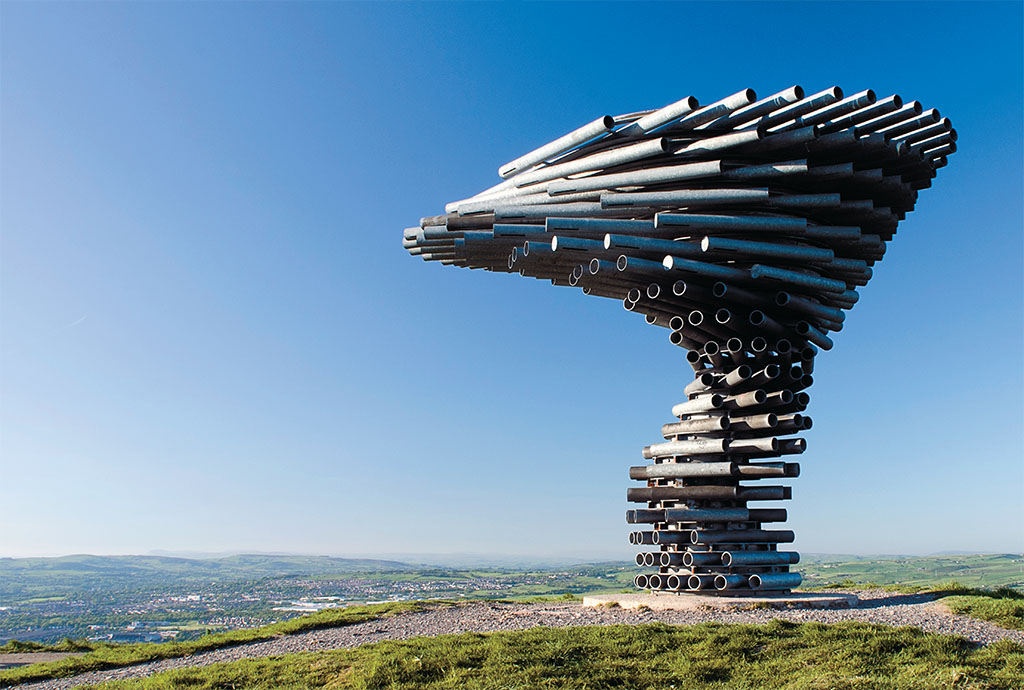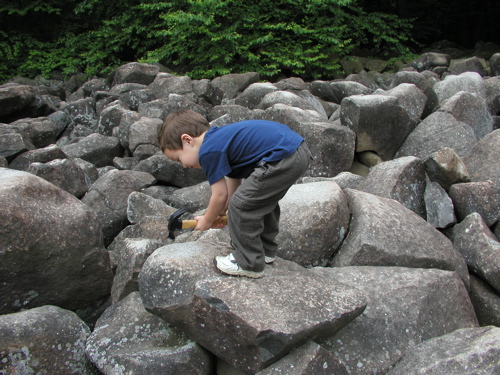
The concept of “archaeoacoustics” questions sound as a fleeting, temporary thing, and instead thinks of it as a facet of a particular space. This viewing of sound gives way to an interesting question of intention–how does the space’s construction influence the meaning of it’s sound?
Above is a specific “sound art” installation called Panopticons. It plays differing sounds, dynamically tied in with the direction and intensity of the wind. Some consider the sound haunting, some beautiful–but it undoubtedly evokes an interesting emotional reaction, one that must differ with the wind.

Above we see another “sound art” piece, one that creates sound using the rolling of the waves. Again, this piece is dynamic, and inherently rooted in it’s own specific space. The experience is constantly different. Take, for example, the Ringing Rocks, in Bucks County, PA. The sound created here must be intentional, since it requires the direct influence of being hit to create sound. What difference does it make to be able to passively observe, like with these sound art pieces, versus being thrust into the position of “musician” by hitting rocks?

What sort of sounds might we be able to find in our every day lives?
